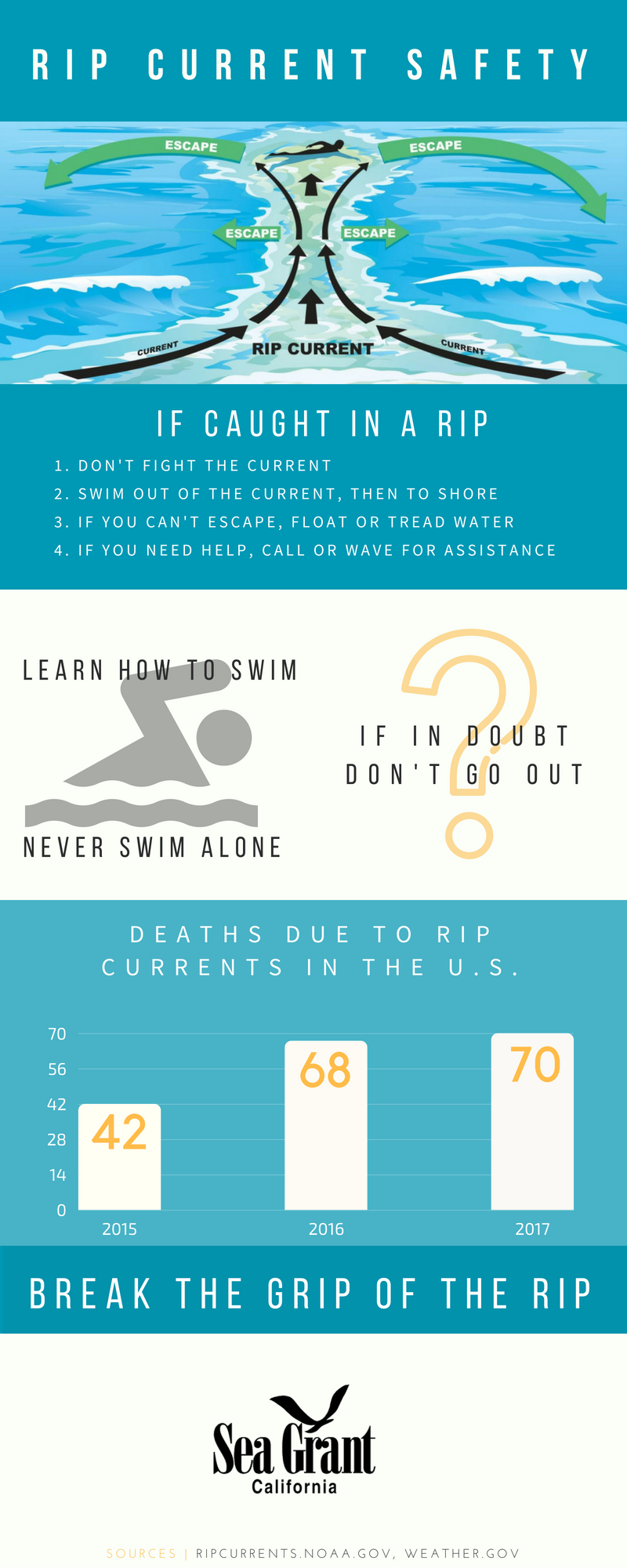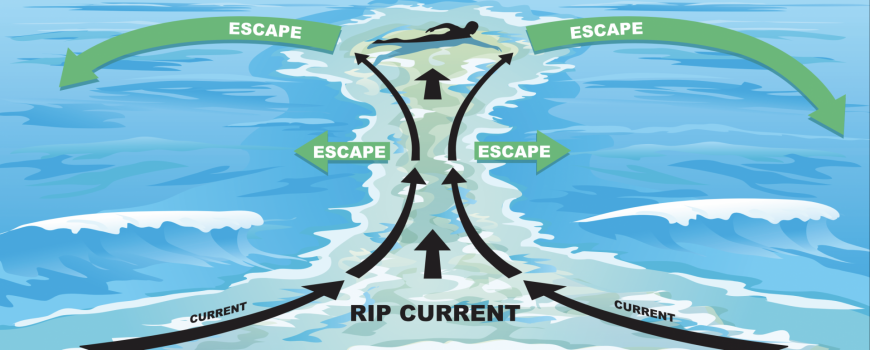A number of people have drowned in the Pacific Ocean, and experts believe a majority of these deaths happen because people panicked when a rip current pulled them from shore. Nationally, lifeguards rescue approximately 60,000 people from drowning a year, and an estimated 80 percent are caused by rip currents.
Signs of a rip current
- A break in the incoming wave pattern
- A channel of churning, choppy water
- A line of foam or debris moving seaward
- A difference in water color
If caught in a rip current
- Stay calm
- Don’t fight the current
- Swim in a direction following the shoreline (parallel to the shore)
- Float or tread water if you’re unable to escape by swimming. When the current weakens, swim at an angle (away from the current) toward shore.
- If you cannot reach shore, draw attention to yourself. Face the shore, call or wave for help.
Helping someone else
- Many people have died while trying to rescue others caught in rip currents.
- Don’t become a victim yourself. If a lifeguard is not present, shout directions on how to escape the current.
- If possible, throw something that floats to the rip current victim. Call 911.
Further information
- Three myths about rip currents
- Safety signs for download
- NOAA National Weather Service: How to avoid getting caught in a rip current
- United States Lifesaving Association: Rip currents

If caught in a rip:
- Don't fight the current
- Swim out of the current, then to shore
- If you can't escape, float or tread water
- If you need help, call or wave for assistance
Learn how to swim - Never swim alone - If in doubt don't go out.
Deaths due to rip currents in the US: 2015: 42 deaths; 2016: 68 deaths, 2017: 70 deaths
Break the grip of the rip

